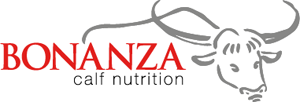Fighting illness – Frequently Asked Questions
Do calf jackets help prevent disease?
Yes, calf jackets help to keep the calves warm, thus saving their energy. The saved energy allows the calf to use more energy to grow and fight infection, if needed. They are protected from the cold elements. In particular, if there is limited bedding or calves are in draughts or any other compromised situation. Be careful in very changeable weather, with wide ranging temperatures as calves will still be subject to this stress. If a calf has a jacket from when it’s born, it needs to keep it for 4-6 weeks. If a jacket is taken off too early, the calf will go into shock as it will not be prepared to regulate its own body temperature adequately. In warmer conditions, they may be removed earlier. If a calf is sick, jackets can help the calf to put extra energy into fighting the illness. It is however vital to wash them. They are excellent carriers of infection, harbouring disease for long periods of time and will increase the spread of infection if not washed between calves.
What is the best bedding to prevent disease in calves?
Young calves will choose clean, dry, deep bedded straw over other bedding. As calves spend approximately 80% of their time lying down and have a poor body temperature regulator, they like something in which they can create a nest to keep themselves warm in the changeable environment we have. This nest allows a micro climate to form, keeping constant head around the calf allowing them to be snug and decreasing energy used to keep warm. It is vital that a clean, deep dry bed is important for helping to keep the calf healthy. If the straw is wet and dirty it is far worse than any other bedding choice.
Is there much of a risk to calf health if you don’t clean out calf pens and keep adding plenty of straw?
Regularly cleaning pens is the best option. This will keep it drier, and decrease the level of bugs in the environment. Therefore, decreasing the risks of scours such as rotavirus and crypto. Not cleaning pens also increases risk of pneumonia, particularly if ventilation is poor and the house is full. This is due to the build up of ammonia in the bedding. However, if you have enough straw to keep down the ammonia and a good slope on the floor for drainage, you will decrease the risk of disease but the calves may not thrive as well.
I only learned recently that calves also get coronavirus, is it as contagious for them as it is for humans?
Coronavirus is very contagious in calves, just like in humans. It is not transmissible from calves to humans. However, it is not as prevalent in calves so it is not an issue that concerns a lot of people. Frequently people vaccinate for rotavirus and by default they vaccinate for coronavirus also.
How much space do calves need?
Space needed for calves depends on both air and floor space. Calves require a min of 1.7m2 but will thrive much better on 2m2 or more. If you have poor ventilation, calves will need more floor space as there will be less air per m2 of floor. The recommended air require per calf is 7m3.
As a rough guide a calculation can be used. However, you must consider other factors such as how exposed the shed is and what materials are used. This will have an impact of the air coming into the shed i.e. the ventilation. Always follow the rule – if in doubt, give more floor space. Besides air and physical space, calves will have the freedom to play and perform natural activities. Loving to run at high speeds in straight lines, calves will be happier with more space, therefore will be less stressed and thrive.
The calculation is:
Depth (m) × Width (m) = Area. Area ÷ 1.7m2 = Total number of calves based on area.
- Depth (m) × Width (m) × Average roof Height (m) = volume. Volume ÷ 7m3 = Total number of calves based on cubic air capacity.
e.g. 1. 9.6m × 4.8m = 46.08 m ÷ 2.0 = 23 calves
- 9.6m × 4.8m × 4.6m = 211.968m ÷ 7 = 30 calves
The pen can hold MAX 23 calves
What might be the cause of scours in calves at grass? – not coccidiosis, regular parasitic infections or high nitrogen in the grass.
It is possible that the grass is too low in fibre. At the time of year we usually put calves to grass, the content of the grass is very high in protein and low in Neutral Detergent Fibres (NDF). Furthermore, it is high in water content, and is quite inconsistent in comparison to straw or hay. Calves are used to having consistent dry feed with high fibre preweaning, usually consuming large amounts of hay or straw. These forages are also lower in protein than lush spring and summer grass. As the calf is adjusting to a new diet, they must do this gradually, and so initially when calves are put to grass feeding a grass that has high levels of fibre, rather than young leafy grass may help. Calves will crave the roughage from it. Calves that are on young leafy grass and do not have access to alternative feed such as straw, can tend to gravitate towards the hedgerows and similar content to satisfy their need for roughage.
Furthermore, if feeding concentrates, using a mix with lower protein and higher digestible fibre can help prevent symptoms occurring.
In young calves, should these symptoms occur, it can help to put them back on milk or milk replacer for a time. This will help alleviate symptoms and settle calves again.
Contact us
Bonanza Calf Nutrition
Producers of the renowned Shine range of milk replacers for calves and lambs.
© 2017 Bonanza Calf Nutrition Ltd.
FIND US
